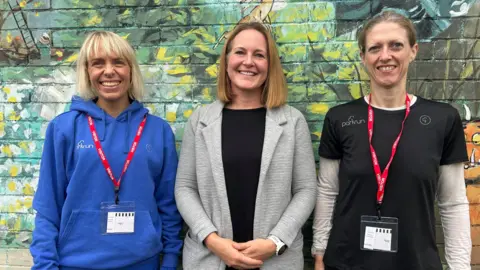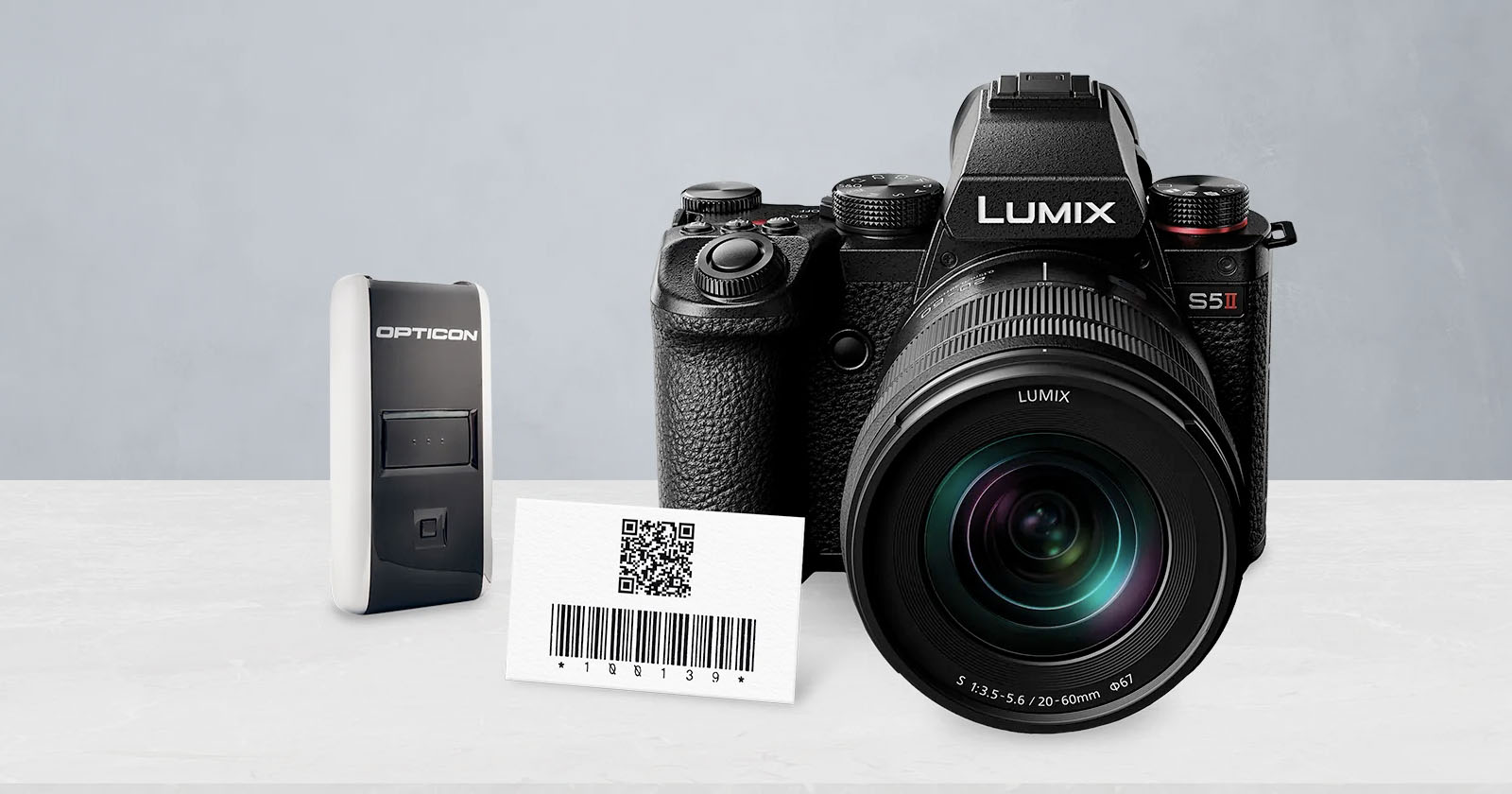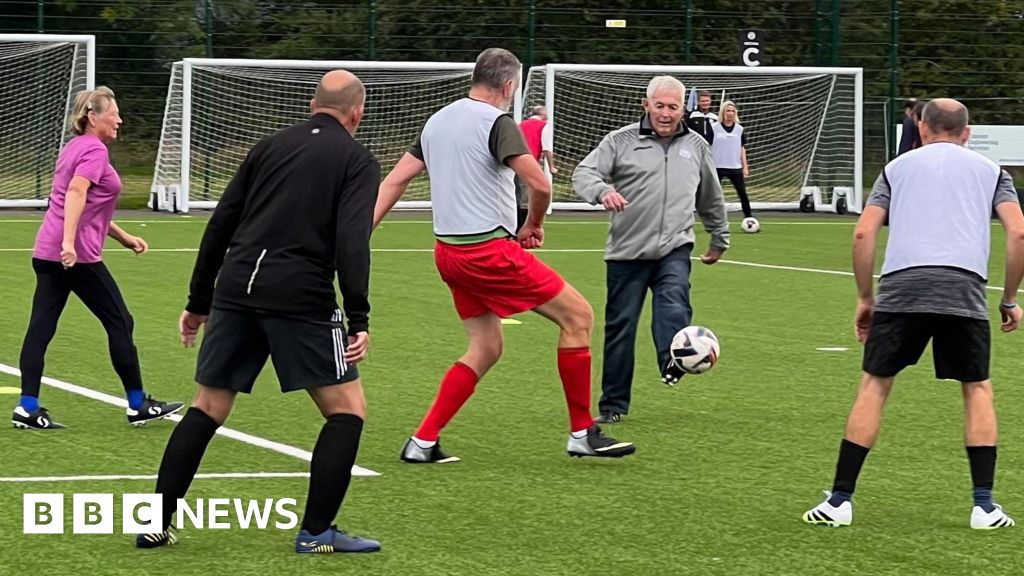An island singer-songwriter has made her musical debut, after being treated for leukaemia.
Originally from Jersey, Isabel Marsh, known as IZI, was given the life-threatening diagnosis in 2020 and underwent intensive treatment that she says put her…

An island singer-songwriter has made her musical debut, after being treated for leukaemia.
Originally from Jersey, Isabel Marsh, known as IZI, was given the life-threatening diagnosis in 2020 and underwent intensive treatment that she says put her…

 BBC
BBCPrimary Schools across the country are being twinned with Parkruns to boost children’s daily exercise.
Ferndale Primary School and Nursery in Swindon is one of 500 UK primary schools which has signed up to the scheme.
The new initiative has been launched to encourage more pupils to get active, after it was revealed that fewer than half of children meet the chief medical officer’s recommended 60 minutes of physical activity per day.
Liz Horrobin, head teacher at Ferndale school, said: “Some of our children don’t even have back gardens so to be able to show them this opportunity was something I couldn’t pass on. Hopefully it will help open some doors for our children.”
Over the past 12 months, 17,000 school children piloted the scheme across the UK.
Emma Sperring, event director for Swindon’s Lydiard adult and junior parkrun, said: “Parkrun is so important for so many people now, it’s a community.
“People come along not just to run but to chat and meet with friends. They might walk they might run.”

Nicola Stokes helps to run the Swindon’s GWR junior Parkrun, near Faringdon Road, and said that in a world of technology, getting active is more important than ever.
She added: “We all know computer games and screen time is a thing so actually getting them out of that cycle is so nice and parkrun is a really friendly way to do it.”
Ms Horrobin said to ease her students into Parkrun, the school are preparing to start an after-school club.
She added: “It will just be showing them that running, sport and fitness doesn’t have to be an exclusive club, you don’t even need to be fit to do it.
“We’ll play things like stuck in the mud and fun games to get your heartbeat going and get us exercising without even realising it.”
Lucy, 11, said she’s looking forward to taking part in the event.
“It’s nice to know that there’s Parkruns for younger children and ones for adults so everyone can get involved,” she said.

Cyberattacks feel pretty inescapable at the moment. They’ve always been there but in recent months there have been countless high profile attacks which have potentially huge consequences, including:
However, smaller businesses or even those not ‘in the spotlight’ can’t rest easy in the hope hackers won’t care about them. In fact, they may even be low hanging fruit. For example:
It’s clear that ‘no one is safe’ and those behind these attacks show no signs of slowing down. A representative from the National Crime Agency suggests she has seen incidents double in the last two years to around 35 – 40 per week. Recent research based on a survey of over 200 cybersecurity professionals in the UK whose companies were subject to a ransomware attack between January – March 2025 also shows that the median demand is over £4 million, which could be devastating for small businesses.
ICO’s Top Tips
It’s, therefore, unsurprising that the ICO have issued a list of practical steps small businesses should take:
1. Back up your data
Data should be regularly backed up, but you also need to check it has worked/is working as intended. Equally, you’ll need to make sure the back up isn’t connected to the live data source to ensure that, if there is malicious activity, it won’t reach the back up.
If you use an external storage device, don’t forget to (a) keep it somewhere other than your main workplace; (b) encrypt it; and (c) lock it away, if possible.
2. Use strong passwords and MFA
If your password is ‘password’, ‘Password1’, ‘Password123’, etc. (you get the jist), it’s probably time to update it! Always consider strong and unique passwords which would be difficult to guess (e.g. the National Cyber Security Centre recommend picking three random words for passwords).
Where you have the option, always consider enabling multifactor authentication (MFA). Although it may be inconvenient waiting for your code to be text/emailed, this second layer of security is always a useful measure to implement.
3. Be aware of your surroundings
One to remember next time you want to do some work on your morning commute. It’s important to exercise caution when working out and about. Whether you’re on the phone or using a screen when people are around, sending a few extra emails is probably not worth the headache of potentially needing to deal with a security incident.
4. Be wary of suspicious emails
It’s always important to ensure you are cautious of suspicious emails. Sometimes it may just be an odd new request, but things like bad grammar, a need to act urgently, and requests for payment are typical signs something may not be real. It’s also worth checking email addresses carefully, e.g. a capital ‘i’ (I) looks near identical to a lower case L (l).
However, things like generative AI and spoofing technologies are enabling threat actors to become more sophisticated. A phishing email may not be as implausible as it once was or written with poor English. Equally, it could appear to come from the sender you know (see, for example, where deepfakes were used to convince someone to transfer $25 million on what they believed were the instructions of the CFO).
5. Install anti-virus and malware protection (and keep it up to date)
Whether in an office or working from home/away, you need to ensure your devices are secure. Anti-virus software is a useful tool to protect against malware which may be sent via phishing attacks.
6. Protect your device while it’s unattended
Whenever you are temporarily away from your desk, at least lock your screen. If you’re going to be away for longer, make sure your screens are in a secure place. An unlocked and unattended laptop in a cafe is a threat actor’s dream.
7. Make sure your Wi-Fi is secure
Even if you’re conscious of your surroundings and locked your screen as recommended while in a cafe, if you’re using the public Wi-Fi or an insecure connection you could still be risking personal data.
Always make sure you are using a secure connection when connecting to the internet, and if you use the cafe’s public network, it’s worth also using a secure virtual private network.
8. Limit access to those who need it
Not everyone in the business will need access to everything, so there should be access controls to ensure people can only see the data they need to. This also needs to be kept in mind where people leave the business or if they’re absent for a long period, as you’ll need to suspend their ability to access the systems.
9. Take care when sharing
Showing someone the wrong thing is hardly new, but it still happens. A lot. For example, you may be sharing your screen in a meeting and have tabs or documents which are confidential or include personal data open which can easily be accidentally shown. Equally, make sure notifications are turned off if you’re sharing a screen to avoid someone else sending something to you being seen by others.
If you’re emailing lots of people which could reveal sensitive information about recipients, consider alternatives to BCC’ing them, such as bulk email or mail merge services. It’s not uncommon for people to CC rather than BCC people, but in certain contexts this could reveal sensitive, if not special category, personal data (see for example, the charity which was fined by the ICO in 2020 when they CC’d 105 members of an HIV advisory board on an email which meant people could be identified). The ICO do also have guidance on sending bulk communications via email.
10. Don’t keep data for longer than you need it
Not only does this limit the amount of personal information which is at risk if you are subject to an attack or there is a breach, but it will also free up storage space and is likely cheaper!
11. Dispose of old IT equipment and records safely
When someone leaves the business, or they get new equipment, make sure there is no personal data on the devices (whether they are laptops, smartphones, or any device) before they are thrown away. For peace of mind, you may want to consider using deletion software or engaging a specialist to wipe any data.
Is cybersecurity a priority for your business?
The ICO is clear that “[m]ost small businesses hold personal information and conduct business digitally, so cyber security must be a priority“. Ian Hulme (Executive Director for Regulatory Supervision at the ICO) also added that “[w]hile cyber attacks can be very sophisticated, we find that many organisations are still neglecting the very foundations of cyber security“.
Of course, all types of organisations need to ensure their systems are resilient against complex attacks, and they are able to meet their security obligations under data protection law. However, it’s important to get the basics right too (we need to walk before we can run!).
Equally, no system is infallible and it’s not uncommon, for example, for cyber criminals to simply buy their way in by ‘paying off’ an employee. Things do go wrong, even for small businesses, so it’s important to think about what you will do when things go wrong, before they do. It may also be worthwhile considering obtaining insurance to cover the costs of a cyberattack (although you’ll still need to have a good standard of security in place to ensure you don’t void any such insurance).
If you’d like to discuss your security obligations or how best to mitigate the chance of and prepare for a cyberattack, or would like training for your organisation, please do reach out to your usual Lewis Silkin contact.
It’s time for stargazers to turn their telescopes toward the night sky. October is setting the stage for two cosmic visitors.
Two newly discovered comets, C/2025 A6 Lemmon and C/2025 R2 SWAN, will sweep across the sky this month.


Panasonic has announced that it is delivering an optional firmware update to the S5 II and S5 IIX that brings a host of updates designed to serve volume photographers, or photographers in fields such as school photos or other types of…

James McCarthyWest of England and
Jules HyamWest of England
 BBC
BBCA football manager says it is “empowering” to watch a team of people with Parkinson’s disease playing the game.
Nigel Osmond…

 Getty Images
Getty ImagesGrowing up above a corner shop in the Sheffield suburb of Wincobank, Naseem Hamed rose from humble beginnings to become a boxing icon and…

In the past week, Robert Half was recognized by Forbes as one of the World’s Best Employers for 2025, an accolade based on an independent survey of more than 300,000 employees across 50 countries that measures satisfaction, culture, and global reputation.
This global recognition underscores Robert Half’s continued investment in employee well-being and its reputation as an employer committed to professional and personal growth opportunities.
We’ll examine how Robert Half’s global employer recognition could shape its investment narrative by highlighting employee-focused strengths and culture.
Trump has pledged to “unleash” American oil and gas and these 22 US stocks have developments that are poised to benefit.
To be a shareholder in Robert Half today, you have to believe that its reputation as a top global employer translates into long-term competitive advantages, especially as the biggest short-term catalyst remains a sustained recovery in hiring demand, while persistent pressures on revenue and margin are still the biggest risks. The recent Forbes World’s Best Employers award is a boost for the company’s employer brand, but it is unlikely to materially shift the near-term outlook given ongoing headwinds in the core business.
Among recent announcements, Robert Half continues consistent quarterly dividends, with the most recent payout of US$0.59 per share, reinforcing its focus on rewarding shareholders, even through a period of weak revenue trends. This dividend consistency may offer reassurance for some investors as they weigh the potential impact of new accolades on the company’s fundamental recovery story.
In contrast, investors should be aware of persistent revenue declines and the risk that…
Read the full narrative on Robert Half (it’s free!)
Robert Half’s narrative projects $5.9 billion in revenue and $313.2 million in earnings by 2028. This requires 1.9% annual revenue growth and a $135.1 million increase in earnings from $178.1 million today.
Uncover how Robert Half’s forecasts yield a $41.56 fair value, a 33% upside to its current price.
Five fair value estimates from the Simply Wall St Community range from US$32 to US$49,991.88, reflecting strikingly wide opinions on Robert Half’s potential. While investor confidence varies, the ongoing risk of flat or declining sales continues to be a factor in shaping expectations for the business’s trajectory, consider exploring several viewpoints before drawing your own conclusion.

An “exciting milestone” has been reached in the development of a new medical testing centre set to open this year.
All 13 modular units which will make up the building of the community diagnostic centre at the Camborne Redruth Community Hospital have been delivered and connected.
NHS Cornwall and Isles of Scilly said internal work was now underway to complete the fit-out ahead of the facility opening to patients.
Susan Bracefield, chief nursing officer of NHS Cornwall, said: “We are excited to be opening another new community diagnostic centre for Cornwall, as part of our continued investment in delivering more services closer to people’s homes, something we know local people really value.”
She added the centre would mean more patients would benefit from faster diagnosis, shorter waiting times, and improved access to treatment.
Once operational the community diagnostic centre would provide:
Geoff Searle, chief executive of InHealth, added: “This is an exciting milestone in the South West CDC programme.
“Expanding this model of healthcare in the South West will bring real benefits to local patients, improving health outcomes through greater access, capacity and choice.”
NHS Cornwall said the hospital site already had strong public transport links but would see an additional 22 new parking bays to ensure easy and convenient access for patients and visitors.

It was over four centuries ago to the day Saturday that Filipinos set foot on the North…